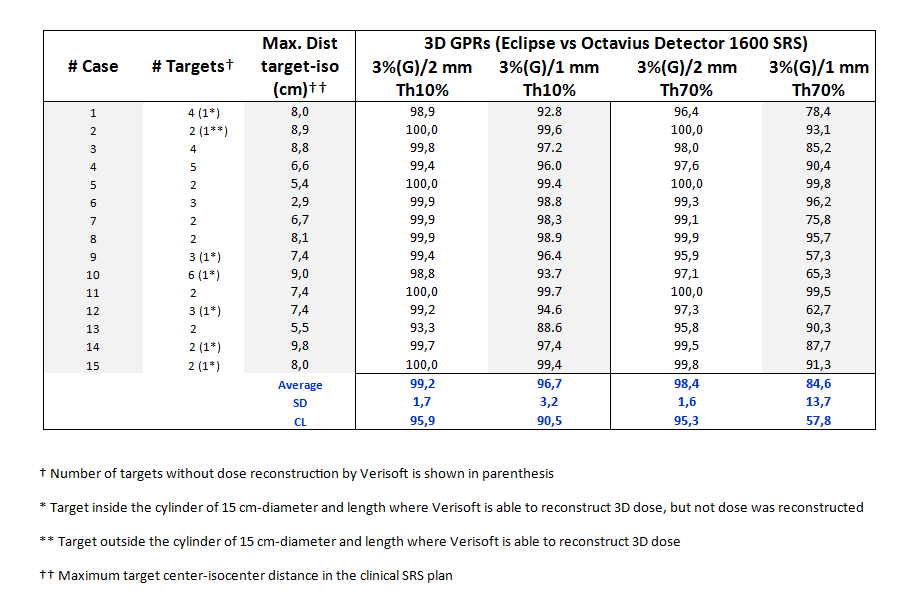Patient-Specific QA of single-isocenter multitarget SRS using the OCTAVIUS® detector 1600 SRS
Juan-Francisco Calvo-Ortega,
Spain
PO-1595
Abstract
Patient-Specific QA of single-isocenter multitarget SRS using the OCTAVIUS® detector 1600 SRS
Authors: JUAN-FRANCISCO CALVO-ORTEGA1, Sandra Moragues-Femenia1, Coral Laosa-Bello1, Miguel Pozo-Massó1, Joan Casals-Farran1
1HOSPITAL QUIRÓNSALUD BARCELONA, RADIATION ONCOLOGY, BARCELONA, Spain
Show Affiliations
Hide Affiliations
Purpose or Objective
To establish the action levels for
pre-treatment QA of single-isocenter multiple brain metastasis stereotactic
radiosurgery (SRS) plans using a new 2D detector array.
Material and Methods
The Octavius 4D Modular Phantom (O4D) with Top
SRS plus phantom. Fifteen clinically treated SIMT SRS plans were retrospectively
included in this study. Number of lesions per plan ranged from 2 to 6 (median: 2),
with a median volume of 1.5 cm3. Distance from target center to
treatment isocenter ranged from 1.7 to 6.2 cm (median: 6.2 cm). Plans were designed with the Eclipse TPS (AAA v 10.0.28, 1 mm calculation grid size) using non-coplanar IMRT
technique, and delivered using 6 MV photons from a Varian Clinac
2100 CD linac with a Millennium 120 MLC.
Each clinical SRS plan
was recalculated on the Top SRS plus phantom synthetically created in the
Eclipse. From the measurements taken by the 2D array for the different beam
incidences of the SRS plan, the PTW Verisoft software (v 8.0.0164) reconstructs
the 3D dose within a cylindrical region of 15 cm-diameter contained by the Top
SRS plus phantom. Dose reconstruction
with 1 mm voxel size was selected in Verisoft. Eclipse and Octavius-based
dose distributions were compared using the 3D gamma analysis tool of the Verisoft
software. The global (G) criteria used for the gamma analysis
were 3%(G)/1 mm and 3%(G)/2 mm, for 10% and 70% dose thresholds. The 70%
threshold focused the analysis in the high dose regions that approximately
correspond to the targets, while the 10% one is the typical dose cut off used
for the gamma analysis. 3D gamma passing rates (GPRs) and confidence levels
(CLs) for the GPR metric were derived. 
Results
Gamma passing rates (GPRs) are shown in Table
1. CLs for 3%(G)/1 mm criteria were 90.5%
and 57.8% for the 10% and 70% dose thresholds, respectively. CLs for 3%(G)/2 mm criteria were 95.9% and 95.3% for the 10% and
70% dose thresholds, respectively.
Conclusion
Acceptable CLs were obtained for 3%(G)/2 mm
criteria. 1 mm distance-to-agreement seems too tight to be used as tolerance
with the Octavius Detector 1600 SRS. Based on our evaluation, we have set our
departmental criteria at 3%(G)/2 mm for a 90% pass regardless the dose threshold
(10% and 70%), when the Octavius Detector 1600 SRS is used.